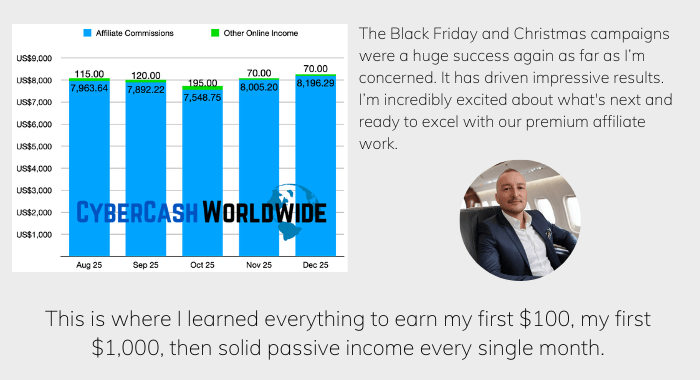Start your product launch with a clever strategy to grab attention before the official release date. Business owners often struggle because they wait until the doors open to start their promotion. Strategic giveaway tactics create a buzz that spreads quickly across social media platforms.
Early gifts serve as a magnet for potential buyers who want a taste of your quality. This plan focuses on how you distribute free value to build a massive waitlist. Success depends on the speed and scale of this initial interest. Small wins early on pave the way for a massive commercial hit. Every single interaction counts.
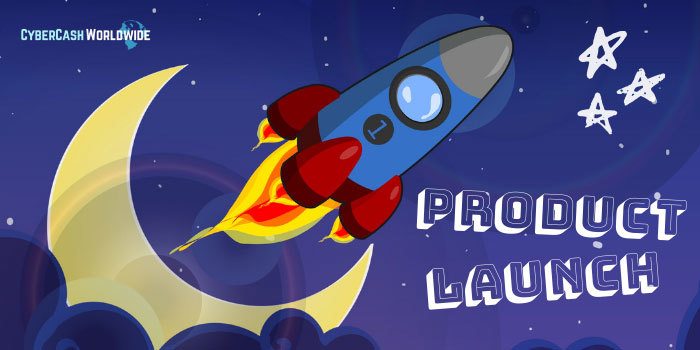
Psychological Triggers for Early Adoption
Human nature dictates that people want what they cannot easily have, especially when the item in question feels exclusive to a select group of early adopters. You create a sense of urgency when you limit the availability of your preliminary gifts, which forces the visitor to make a choice before the opportunity vanishes forever. These initial incentives act as a psychological bridge to your paid product and establish a sense of curiosity. Scarcity drives the desire to act quickly before the window closes for good. People feel a rush of excitement when they secure a spot on a limited list that others cannot access.
The scarcity mindset forces your prospects to make a quick decision without overthinking the minor details. You shift the focus from price to the fear of missing out on a specific advantage that you are giving away for free. This mental state ensures that your messages receive immediate attention in a crowded inbox or a busy social feed. High demand for free items suggests that the final product possesses extreme value and high quality. Your reputation grows as more people scramble to claim their early reward before the timer hits zero.
Reciprocity plays a massive role in how these early interactions function between you and your prospects. You give away something useful and the recipient feels a natural urge to return the favor by listening to your future sales pitch. This psychological debt often translates into a future purchase or a positive review when the main product finally hits the market. Small gestures early in the process build a foundation of trust that is necessary for a high ticket sale. Your prospects will feel more comfortable spending money later because you already proved your worth through a free sample.
Restrict the number of free downloads to the first few hundred users. This creates a race where people check their email frequently for updates to ensure they do not miss out.
Install a countdown clock on your landing page to show the remaining time for the giveaway. Time pressure often increases the conversion rate for your signup form by discouraging procrastination.
Dispatch a notification when the spots for the early giveaway are almost full. Alerts of this nature trigger a final surge of signups from hesitant visitors who need a small push to act.
Assign a special badge or status to those who sign up before the official launch. People love to feel like part of an inner circle or a select group of early adopters who get special treatment.
Design the Perfect Preliminary Gift

Quality remains the most influential factor when you distribute free materials to your potential customer base. You must resist the urge to give away junk just to fill a gap in your marketing schedule. High quality items prove that you respect the time of your potential customers and that you are an expert in your field. Low quality gifts will damage your brand before you even open the doors for the main event. Success starts with a gift that solves a small but real problem for the user immediately.
Your free item should link directly to the solution your main product delivers to the market. You want to give them a bite of the steak, not just a picture of the menu, so they know exactly what to expect from the full version. Consistency in your messaging helps people see the logical path to a purchase once the launch goes live. Prospects will trust your premium solutions if the free sample delivers immediate results that they can measure. Every piece of content you release shall reflect the high standards of the final release to maintain a professional image.
Delivery of your gift should happen instantly without any technical friction that might slow down the user. You lose interest if the signup process is too long or requires too much personal data from the visitor. Simple downloads or quick access codes work best for fast - paced digital launches where attention spans are short. Speed of consumption is a metric you must track during this phase to ensure people actually use what you gave them. You want the user to experience a win within the first five minutes of interaction with your brand.
Select a checklist or a template that simplifies a complex task for your users. These simple assets often get more use than a long ebook or a complex video series because they are easy to apply.
Share a single module of your upcoming course or software for a limited time. This strategy lets the market test the quality of your work without any financial risk on their part.
Launch a live webinar that teaches one specific skill related to your new product. Live events build immediate connection and allow for real - time questions and answers that build trust.
Send a physical sample to a select group of influencers in your niche. Physical items create a tactile connection that digital products sometimes lack and generate great visual content for social media.
Social Proof and Referral Velocity

People look for cues from others before they commit to a new brand or a new product launch. You should display the number of people who already joined the waitlist to show that your idea has merit. High numbers create a bandwagon effect that pulls in more curious visitors who do not want to be left behind. Social proof works best when it feels natural and reflects real interest from a variety of different people. Your launch gains momentum as the count of early adopters continues to climb toward your target.
Referrals will multiply your reach without increasing your advertising spend or your manual workload. You should reward users who invite their friends to join the pre - launch list with extra bonuses or earlier access. Points systems or leaderboard rankings encourage a healthy sense of competition among your most loyal followers. Subscribers become your best promoters when there is a clear incentive involved for their efforts. This viral loop ensures that your message reaches circles you could not touch alone through traditional marketing.
Public testimonials from early testers will silence the doubts of skeptical buyers who are on the fence. You need to gather feedback as soon as people use your free gifts so you can showcase their success. Real quotes from real people carry more weight than any clever marketing copy you could write yourself. Screenshots of positive social media mentions serve as excellent content for your pages and build massive credibility. Success in the pre - launch phase relies on the voices of your most excited fans.
Place a social sharing button on the confirmation page of your signup form. Most people will share their excitement if you make the process quick and painless for them.
Setup a referral system that gives users early access for every three friends they invite. High rewards for small actions will drive the growth of your email list at a rapid pace.
Display a live feed of recent signups on your landing page. Live updates prove that your product is popular and that people are currently joining the movement in real - time.
Post short video clips of early users talking about their experience. Video content feels more personal and builds a higher level of trust than plain text on a screen.
Conversion Logic for the Early List
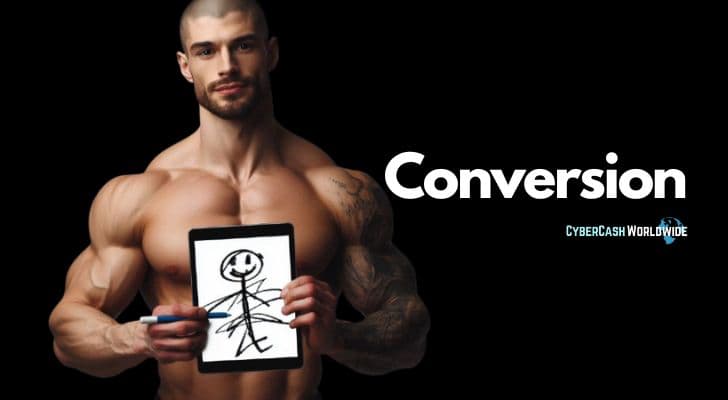
Your primary mission is to turn these free users into paying customers once the product is officially available. You do this by highlighting the gap between the free gift and the full product so they see the extra value. The gift solves a part of the problem, while the product solves the whole thing in a more efficient way. Clarity in your messaging will help people see why they need to upgrade to the paid version. You must maintain a balance between giving value and holding back the best features for the launch.
Early bird discounts will entice the most loyal members of your waitlist to buy on day one. You should set a price that will never be available again after the launch phase ends. This limited window for a better deal rewards those who supported you early and took a chance on your vision. Fear of a price hike is a great motivator for those sitting on the fence about the purchase. Your sales will spike in the first few hours if the deal is too good to ignore.
Emails should build anticipation for the exact moment the store opens for business. You need to tell them exactly what to do when the timer hits zero so they do not get lost. Simple instructions will prevent confusion during the high - pressure launch window when emotions are running high. Every email you send shall focus on one single action for the reader to take to avoid overwhelming them. Consistency in your call to action leads to a smoother transition to the checkout page and more revenue.
Draft a series of teaser emails that reveal specific features of the paid product. Teasers build curiosity and keep your brand at the front of the mind of the user throughout the week.
Present an exclusive bonus that only the first fifty buyers will receive. Extreme scarcity at the top of the funnel pushes people to buy as soon as the doors open.
Design a comparison chart that shows the difference between the free and paid versions. Visual aids help people realize the massive extra value they get when they buy the full version.
Produce a countdown video that explains the final steps of the purchase process. Clarity on how to buy will reduce the friction and anxiety during the actual launch day.
Technical Infrastructure for High Traffic
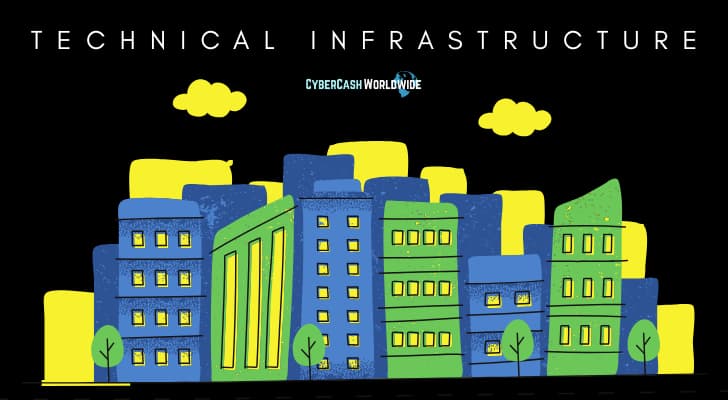
Success brings traffic that will crush a weak server or a slow website if you are not prepared. You must ensure that your landing page loads in less than two seconds to keep the attention of the visitor. High bounce rates occur when visitors wait too long for the content to appear on their mobile screens. Robust hosting plans will keep your site online during the busiest hours of the launch when signups are peaking. Your reputation depends on a professional and functional digital experience for every visitor who lands on your page.
Automation systems will handle the heavy lifting of lead management while you focus on the big picture. You should connect your signup form to a reliable email service provider that can handle bulk deliveries. Automated welcome messages deliver your free gifts without any manual work required from your team. These systems work while you sleep to grow your list and nurture prospects for the big day. Reliability in your tech stack prevents the loss of valuable lead data that you worked hard to acquire.
Tracking and analytics will reveal where your best traffic comes from and which ads are working. You need to know which social media posts drive the most signups so you can do more of what works. Data allows you to shift your budget to the most successful marketing channels in real - time. Pixel tracking helps you follow up with people who visited but did not sign up for the free gift. Metrics will guide your decisions and help you optimize the funnel for better results and more sales.
Test your landing page on multiple mobile devices to ensure a smooth layout. Most users will see your site on a phone while they browse social media in their free time.
Set up automated backups of your database to prevent loss of lead information. Technical glitches happen and you need a way to recover your data quickly to avoid a disaster.
Use a content delivery network to speed up the loading of your images. Faster sites lead to better user experiences and higher conversion rates for your gifts and products.
Install a heatmap tracker to see where people click on your signup page. Visual data shows you exactly which parts of your page attract the most attention and which parts are ignored.
Content Strategy for the Teaser Phase

Visual content will grab interest faster than long blocks of text on a social media feed. You should create short videos that show the product in action so people can see the benefits. Behind the scenes footage makes the process feel more human and accessible to the average person. Prospects love to see the work that goes into building something new from the ground up. High quality visuals will make your brand look more professional and trustworthy to a new visitor.
Storytelling will help people relate to the problem your product solves in their daily lives. You should talk about why you decided to create this solution and the obstacles you overcame. Focus on the transformation that your customers will experience once they start using your product. Every post should leave the reader wanting to know more about the release date and the features. Curiosity is a mental hook that keeps people returning to your social pages for more updates.
Consistency in your posting schedule builds a habit for your followers and keeps you relevant. You must show up every day to keep the excitement levels high as the launch date approaches. Mixed media formats like polls and images will keep the feed interesting and prevent boredom. Respond to every comment to build a rapport with your potential buyers and answer their questions. Social interaction proves that there is a real person behind the brand who cares about the customers.
Post a series of countdown graphics on your Instagram or Facebook stories. Daily reminders keep the launch date at the top of your followers' minds every single day.
Host a live question and answer session on your favorite social platform. Real - time interaction builds trust and allows you to address specific concerns from the market directly.
Share testimonials from people who tested your product during the development phase. Outside validation is often more persuasive than your own marketing claims and builds immediate social proof.
Upload a video that explains one major advantage of the new product. Clarity on the value of your work will help people decide to join the waitlist without hesitation.
Feedback Loops and Product Refinement

Early users will tell you exactly what they like and dislike about your free samples. You should treat their feedback as a gift to improve your final release before it goes public. Surveys and polls are simple ways to gather this valuable information without bothering the user too much. Small changes based on user input will make the product more successful and more market - fit. Your market will feel a sense of ownership if they see their suggestions implemented in the final version.
Adjustments during the pre - launch phase save you from expensive mistakes later down the line. You will find bugs or errors that you missed during the initial testing phase of the development. Fix these issues before the general public has access to the product to avoid a PR nightmare. Polished products lead to better reviews and more word of mouth sales after the launch. Excellence in the details sets you apart from your competitors who might rush to market.
Loyalty grows when you listen to the needs of your early fans and show that you care. You should thank everyone who takes the time to give their opinion on your work. Open communication builds a strong relationship with your future customers that lasts a long time. People will support a brand that respects and values their input during the creation process. Success depends on how well you serve the needs of your market through constant improvement.
Send a short survey to everyone who downloaded your free gift. Ask them one or two questions about their experience to get the best data for your report.
Create a private group for early testers to discuss the product features. Direct access to your most active users will reveal insights you would otherwise miss during solo testing.
Offer a small reward for users who report bugs or suggest improvements. Incentives for feedback ensure that you get high quality information from your testers in a timely manner.
Publish a blog post that outlines the changes you made based on feedback. Transparency shows your prospects that you are dedicated to delivering the best possible solution to their problems.
How I "Finally" Make Over $7,000 Monthly Income
"The most valuable thing I've ever done!"
Viral Mechanics of Free Access
Gamification will turn your pre - launch phase into an exciting event that people want to talk about. You should create a points system for various social media actions like likes, shares, and comments. Users will earn more rewards as they share your content with others in their network. Leaderboards create a competitive environment that drives more traffic to your landing page for free. This system turns your prospects into a motivated marketing force that works on your behalf.
Rewards must be attractive enough to justify the effort of sharing your content with friends. You will see better results if the prizes are exclusive or high value to the target user. Discounts or early access work well for digital products and services that have low margins. Merchandise or physical gifts create a tangible connection to the brand that people appreciate. Clear rules and simple participation steps are key for viral success and high participation rates.
Momentum will build as more people enter the referral loop and start inviting their contacts. You should keep the excitement alive with regular updates on the contest and the prizes. Announce the leaders or the winners of smaller prizes during the campaign to keep interest high. Social proof grows as people see their friends participating in the giveaway across different platforms. Viral growth will decrease your cost per lead while increasing your reach to new market segments.
Implement a giveaway where users get extra entries for every social share. These referral loops will broaden your reach to new groups of potential customers without extra ad spend.
Present a mystery bonus to the top ten people on your referral leaderboard. Mystery and competition are strong motivators for people to share your content more than once.
Create a shareable graphic that users can post to show their status. Visual symbols of participation help spread the word to the friends of your fans in a subtle way.
Run a short contest with a big prize for the person with the most referrals. High stakes prizes will attract the most dedicated and active promoters to your brand during the launch.
Email Sequences for Hype Management
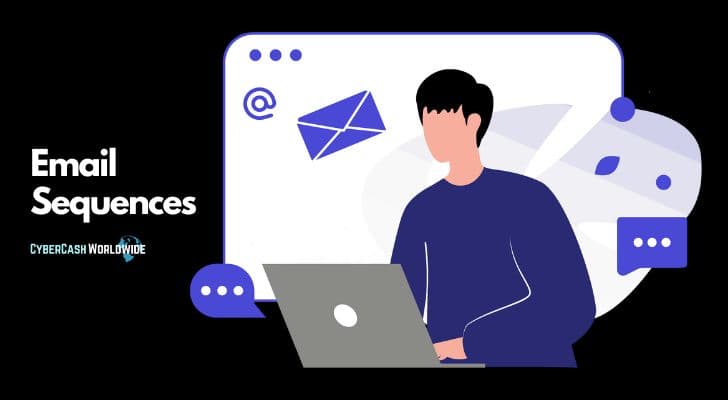
Email marketing will remain your most productive sales channel during a launch of any size. You should start with a warm welcome that delivers the free gift immediately after signup. The first email sets the tone for the rest of your communication and builds the initial bond. You will build a routine where people look forward to your messages if you provide consistent value. Clear subject lines will ensure that your emails actually get opened in a crowded inbox.
Education based emails will teach your prospects about the problem you solve with your product. You should share tips and tricks that help them achieve a small win before they buy. Value comes from being helpful before you ever ask for a sale or a credit card number. This stage builds the authority you need to close the deal later when the store opens. People will buy from experts who have already helped them for free through their content.
Launch emails should be frequent and focused on the countdown to the official release. You need to remind them of the advantages of the paid product and what they will gain. Use testimonials and social proof to build confidence in the release and the quality of the work. The final push should emphasize the limited time and the special price for early birds. Direct calls to action will tell the reader exactly what to do next to secure their copy.
Draft a seven day email sequence that leads up to the launch date. Each email should focus on a different feature or advantage of the product to keep interest high.
Schedule a last chance email for the final hours of the promotion. Reminders about the closing window often trigger the most sales in a campaign due to urgency.
Personalize your subject lines to increase the open rates of your messages. Names and specific details make your communication feel more direct and personal to the recipient.
Add a clear link to the checkout page in every single launch email. Easy access to the buy button will reduce the friction for your prospects and increase sales.
Transitioning from Free to Paid
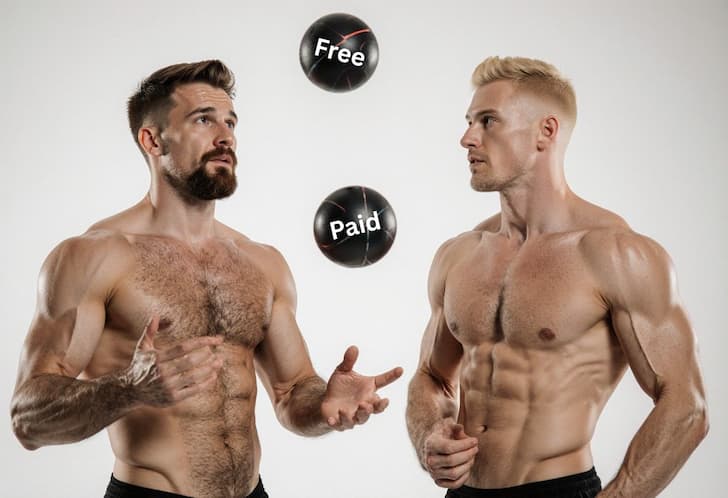
Launch day will require your full attention and technical readiness to handle the influx of orders. You should send the first sales email early in the morning to catch the early birds. High traffic will test your checkout system and payment processor to their limits. Fast responses to customer questions will help close more sales and build a better reputation. Preparation ensures that you can handle the rush without any stress or technical failures.
Special incentives for your waitlist will boost your initial sales numbers and build momentum. You should set a bonus that is only for the people who signed up early for the free gift. This reward acknowledges their support during the development phase and makes them feel valued. Sales velocity in the first hour creates a wave of social proof that influences later buyers. Success on day one will set the tone for the rest of the campaign and the brand.
Long term retention will depend on the quality of the paid product and the support you offer. You should continue to deliver value after the sale is complete to avoid buyer's remorse. Good customer service will turn buyers into lifelong fans of your brand and your vision. Happy customers will tell their friends about their positive experience and bring in more business. Your business will grow as you build a reputation for high standards and excellent products.
Present a limited time coupon code for the first twenty-four hours. Quick discounts will drive immediate action from the most interested members of your list on launch day.
Host a live stream on launch day to acknowledge the release with your fans. Live interaction adds a sense of event and excitement to the purchase process for everyone involved.
Send a personalized thank you note to the first few buyers. Small personal touches build loyalty and encourage positive reviews for your new brand and its future products.
Publish a live tally of the first few sales to build social proof. Observation of other people buying will give hesitant prospects the confidence to join them and complete the purchase.
Scaling through Paid Advertising

Paid traffic will amplify the reach of your free pre - launch gifts to a much larger group of people. You should target specific keywords and interests that align with the solution you deliver to the market. Small daily budgets allow you to test which headlines and images perform best for your signup form. Ad platforms will reward high click rates with lower costs per lead for your entire campaign. Your objective is to fill the top of your funnel with as many interested people as possible.
Retargeting ads will follow people who visited your site but failed to join the waitlist. You should remind these visitors of the value they are missing by not claiming the free gift. These reminders serve as a gentle nudge to get them back into your marketing ecosystem. Repetition in your messaging increases the likelihood that a prospect will finally take action and sign up. You will see a higher return on investment when you focus on people who already know your brand.
Video ads often perform better than static images on platforms like Facebook and TikTok. You should show a quick demonstration of the product to pique the curiosity of the viewer. Visual evidence of the product in action builds immediate credibility for your upcoming release. Every dollar spent on advertising shall move you closer to a successful and profitable launch. High volume traffic ensures that you have enough data to make smart decisions for the future of the brand.
Run a simple A/B test on your ad copy to see which message resonates most. Small variations in wording will lead to big differences in your total lead count and cost.
Set up a custom lookalike market based on your existing email subscribers. This method helps you find new people who share the same interests as your current fans and followers.
Use a dedicated landing page for each specific ad campaign you run. Consistency between the ad and the page will lead to a higher conversion rate for your gifts.
Monitor your cost per acquisition daily to ensure the campaign remains within your budget. Quick adjustments to your spending will prevent you from wasting money on low performing ads and channels.
Analyze Post-Launch Performance

Data review happens once the initial launch window closes and the dust begins to settle. You must look at the total number of signups compared to the total number of sales. This ratio reveals the conversion rate and the success of your pre-launch strategy. You will identify which sources of traffic delivered the highest quality leads to your site. Metrics will tell the true story of your campaign beyond your personal feelings or expectations.
Feedback from paying customers will guide the next version of your product or service. You should reach out to those who did not buy to find out why they declined. These conversations often reveal hidden objections that you need to address in future marketing. Success is a long process of constant refinement based on real world interactions and data. You will grow faster when you listen to the market and adapt your systems accordingly.
Preparation for the next launch begins with the lessons you learned during this one. You should document every step of the process to create a repeatable system for the future. High quality data allows you to predict your results with more accuracy the next time you release something. Every campaign is an opportunity to sharpen your skills and improve your brand presence. Your future self will thank you for the time you spend on detailed analysis today.
Calculate the lifetime value of the customers who joined through the free gift. This number will help you decide how much you should spend on future giveaways and ads.
Draft a report that lists the most frequent questions from your support desk. Common concerns should be addressed on your sales page to reduce friction for future buyers.
Send a follow up email to everyone who joined the list but did not buy. A simple survey will give you the information you need to improve your next sales pitch.
Review the performance of each individual email in your pre-launch sequence. Click rates will show you which topics and headlines were the most interesting to your prospects.
Success in your product launch relies on the early momentum you build with free gifts. You must prioritize high quality items that solve real problems for your market. These preliminary incentives serve as the foundation for your future sales and brand reputation.
People will trust your paid solutions if your free samples deliver immediate results. High traffic and viral growth occur when you implement clever referral systems. Every step of this plan focuses on converting curiosity into actual revenue. Your preparation will determine the scale of your success. Start your campaign today and watch your business grow. Plan well and prosper.

